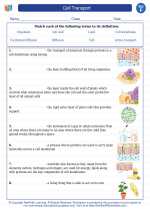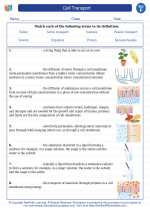Expression in Science
In science, an expression is a mathematical phrase that combines numbers, variables, and operators (such as +, -, *, /) to represent a quantity. Expressions are used to show the relationships between different quantities and to calculate values in scientific equations and formulas.
Key Terms
- Variable: A symbol used to represent an unknown or changing quantity in an expression.
- Operator: A symbol used to indicate a mathematical operation, such as addition, subtraction, multiplication, or division.
- Term: A single number, variable, or a combination of numbers and variables in an expression.
- Coefficient: The numerical factor of a term that is multiplied by a variable.
Examples of Expressions
Here are a few examples of expressions:
- 3x + 5
- 2y - 7
- 4a2 - 2a + 9
Study Guide
To understand expressions in science, it's important to:
- Identify the variables, constants, and operators in an expression.
- Understand the order of operations (PEMDAS: Parentheses, Exponents, Multiplication and Division from left to right, Addition and Subtraction from left to right).
- Combine like terms by adding or subtracting terms with the same variables and exponents.
- Simplify expressions by performing the operations indicated by the operators.
Practice simplifying expressions and solving equations to improve your understanding of expressions in science.
.◂Science Worksheets and Study Guides Sixth Grade. Cell Transport
Worksheet/Answer key Cell Transport
Cell Transport  Worksheet/Answer key
Worksheet/Answer key Cell Transport
Cell Transport  Vocabulary/Answer key
Vocabulary/Answer key Cell Transport
Cell Transport  Vocabulary/Answer key
Vocabulary/Answer key Cell Transport
Cell Transport 

 Worksheet/Answer key
Worksheet/Answer key
 Vocabulary/Answer key
Vocabulary/Answer key
 Vocabulary/Answer key
Vocabulary/Answer key

The resources above cover the following skills:
Reading Standards for Literacy in Science and Technical Subjects
Craft and Structure
Determine the meaning of symbols, key terms, and other domain-specific words and phrases as they are used in a specific scientific or technical context relevant to grades 6-8 texts and topics.